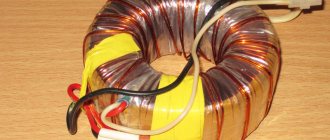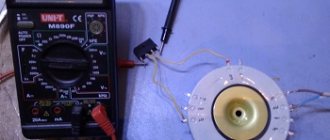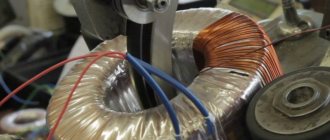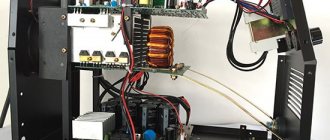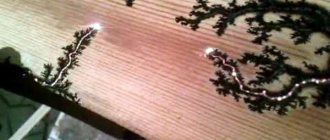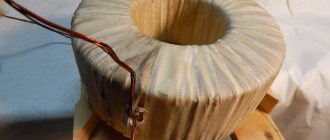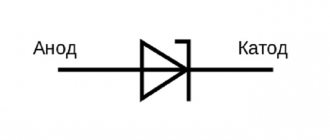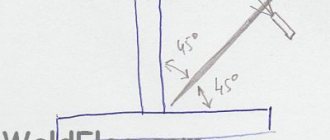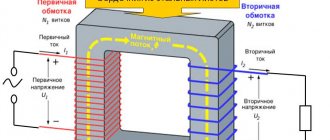A transformer is a unit designed to transmit electricity with changed parameters through the network to the end consumer. This equipment has a specific design. Transformers can step down or step up voltage.
Over time, the core may need to be rewinded. In this case, the radio amateur is faced with the question of how to wind the transformer. This process takes a lot of time and requires concentration. However, there is nothing complicated about rewinding a circuit. There are step-by-step instructions for this.
Design
The transformer operates on the principle of electromagnetic induction. It may have a different magnetic drive design. However, one of the most common is the toroidal coil. Its design was invented by Faraday. To understand how to wind a toroidal transformer or a device of any other design, you must first consider the design of its coil.
Toroidal devices convert alternating voltage from one power to another. There are single-phase and three-phase designs. They consist of several elements. The structure includes a ferromagnetic steel core. There is a rubber gasket, primary and secondary winding, as well as insulation between them.
The winding has a screen. The core is also covered with insulating material. A fuse and fasteners are also used. To connect the windings into a single system, a magnetic drive is used.
Prices for rewinding transformers
| Type | Price, rub. | |
| TDM 315 | 9800 | |
| TDM 317 | 10000 | |
| TDM 401,402 | 11400 | |
| TDM 500 | 11900 | |
| VD 250 | 9870 | |
| VD 306 SE | 16520 | |
| VD 306 SEM | 20790 | |
| VD 406 SE | 17950 | |
| VD 505 | 27916 | |
| VDU 350 | 41890 | |
| VDU 506 | 33000 | |
| VDU 601 | 37800 | |
| TK - 75 kW | 20000 | |
| TK - 100 kW | 25000 | |
| TK - 150 kW | 30000 | |
Winding device
Toroidal transformers can be of different types. This must be taken into account during the contour creation process. You can wind a transformer 220/220, 12/220 or other varieties using a special tool.
To simplify the process, you can make a special device. It consists of wooden posts that are fastened together with a metal rod. It has the shape of a handle. This skewer will help you quickly wind the outlines. The twig should be no thicker than 1 cm. It will pierce the frame right through. Using a drill will make this process easier.
The drill is mounted on the surface of the table. It will be parallel. The handle should rotate freely. The rod is inserted into the drill chuck. Before this, you need to put a block with the frame of the future transformer on the metal pin. The rod may have a thread. This option is considered preferable. The block can be clamped on both sides using a nut, textolite plates or wooden planks.
Selection of necessary tools
Before you begin directly winding, you need to stock up on all the necessary devices and tools to complete the work:
- From two racks fastened with a wooden board and a metal rod between them, shaped like a handle, make a kind of skewer. The rod should be chosen no thicker than 1 cm and inserted between the racks so that its axis penetrates through the frame of the future device.
Most often, for such purposes, a wooden block is used, in which a hole is made for the axle and “adjusted” to the dimensions of the frame.
If you have a drill at hand, this will be much easier. The drill must be strengthened so that it is parallel to the table, and its handle can be rotated freely. A rod should be inserted into the drill chuck, having first placed a block on it with the transformer frame attached to it.It is better to give preference to a threaded rod; in this case, the block can be secured by clamping it with nuts on both sides. In cases where it is possible to clamp the frame with nuts, PCB plates or wooden planks, there is no need to use a block.
- The winding mechanism can replace a telephone inductor , a machine for thread spools, a device for rewinding film, or some similar device. The main thing is that the process goes smoothly, without disruptions.
- Another device without which it will be impossible to wind a transformer yourself is an unwinding device. Typically, devices of this kind work on the same principle as winding devices, the only difference is that in this case you can do without a rotating handle .
- To count the number of turns, you will need a separate device, for example, a water meter, a bicycle speedometer, or an electric meter. For the device to work, it must be connected to the winding machine with a flexible roller . If you cannot find a similar device, then the turns can be counted orally.
Types and methods, directions of winding of transformer windings are presented in the photo:
Other tools
To wind a 12/220, pulse, ferrite or other types of transformer, you need to prepare a few more tools. Instead of the design presented above, you can use an inductor from a telephone, a device for rewinding film, or a machine for a bobbin with thread. There are many options. They must ensure a smooth, uniform process.
You will also need to prepare the device for unwinding. In principle, such equipment is similar to the devices presented above. However, in the reverse process, rotation can be performed without a handle.
In order not to count the number of turns yourself, you should purchase a special device. It will take into account the number of turns on the coil. An ordinary water meter or bicycle speedometer may be suitable for these purposes. Using a flexible roller, the selected metering device is connected to the winding equipment. You can count the number of turns of a coil orally.
Calculations
To understand how to wind a pulse transformer, it is necessary to make calculations. If you are rewinding an existing coil, you can simply remember the original number of turns and purchase a wire of identical cross-section. In this case, you can do without calculations.
But if you need to create a new transformer, you need to determine the quantity and type of materials. For example, for a device with a working load from 12 to 220 V, a device with power from 90 to 150 W will be required. You can take a magnetic drive, for example, from an old TV. The conductor cross-section is determined in accordance with the power of the unit.
The number of turns of the coils is determined for 1V. This figure is equivalent to 50 Hz. The primary (P) and secondary (B) windings are calculated as follows:
- P = 12 x 50/10 = 60 turns.
- B = 220 x 50/10 = 1100 turns.
To determine the currents in them, the following formula is used:
- Tp = 150: 12 = 12.5 A.
- TV = 150: 220 = 0.7 A.
The obtained result must be taken into account when choosing materials for creating a new device.
Transformer rewinding service in Moscow
The transformer rewinding service in Moscow provided by our company can be used to repair, modernize, or change the technical parameters of various types of this electrical equipment. Rewinding refers to the following types of work: disassembling the transformer, troubleshooting it, actually rewinding the transformer coils, applying insulation (impregnation with varnish), general assembly, testing on a bench.
Pulse transformer rewinding technology is different from other types. In order to reduce interference and losses, its design uses a complex sectional winding. Rewinding only the primary or secondary winding of a pulse transformer is impossible; both must be rewinded at once. When rewinding such devices, the sequence of operations must be strictly followed; the slightest deviations can significantly change its characteristics and even lead to failure.
In the event that there is a need to manufacture a device with non-standard voltage and current parameters, a careful calculation and rewinding of a transformer of a suitable (unified) type is made. In this case, the existing structural elements (winding frame, core) are taken as a basis and the old winding is replaced with a new one. For example, this way you can rewind the TS 180 transformer (secondary winding), which is equivalent to manufacturing a new one with the given characteristics.
In the process of rewinding a transformer, it becomes possible to improve its technical and operational parameters. Using the method of dividing the windings into sections instead of additional insulation improves heat removal, and therefore helps to increase the rated power of the transformer. Air cooling of the winding will be more effective the more separate sections there are. The use of effective winding methods can, by reducing the cross-section of wires, reduce the size of the windings (coils), their weight and the total cost of the device.
Layer insulation
To wind a ferrite transformer or other type of device, you need to study one more nuance. Insulation materials should be installed between certain layers of conductors. Most often, condensate or cable paper is used for this. All necessary materials can be purchased in specialized stores. The paper must have sufficient density and be smooth without gaps or holes.
Between the individual coils, insulating layers are created from stronger materials. Lacquered fabric is most often used. It is covered with paper on both sides. This is also necessary to level the surface before winding. If you couldn’t find varnished fabric, you can use paper folded in several layers instead.
The paper is cut into strips, the width of which should be greater than the outline. They should extend beyond the edges of the winding by 3-4 mm. Excess material will be folded up. This will keep the edges of the reel well protected.
Frame
To understand how to properly wind a transformer, you should pay attention to every detail of this process. Having prepared the insulation, wire and tools, you should make a frame. You can use cardboard for this. The inside of the frame must be larger than the core rod.
For an O-shaped magnetic drive, you need to prepare 2 coils. For an W-shaped core, one circuit will be required. In the first option, the round core must be covered with an insulating layer. Only after this do they begin winding.
If the magnetic drive is W-shaped, the frame is cut out from the sleeve. Brushes are cut out of cardboard. In this case, the coil will need to be wrapped in a compact box. The brushes are put on the sleeves. Having prepared the frame, you can begin winding the conductor.
Step-by-step winding instructions
Winding the transformer with your own hands will be quite simple. To do this, a reel of wire should be installed in the unwinding equipment. The old wire will be removed from it. The frame of the future transformer must be placed in the winding equipment. Then you can make rotational movements. They should be measured, without jerking.
During this procedure, the wire from the old coil will be moved to the new frame. The distance between the wire and the table surface should be at least 20 cm. This will allow you to place your hand and fix the cable.
You need to lay out all the necessary tools and equipment on the table in advance. You should have insulating paper, scissors, sandpaper, a soldering iron (plugged into the mains), a pen or pencil on hand. With one hand you need to turn the handle of the winding device, and with the other you need to fix the conductor. It is necessary that the turns are laid evenly and evenly.
Algorithm of actions
- Fix the wire with the coil in the winding device , and the transformer frame in the winding device. Make rotations soft, moderate, without disruption.
- Lower the wire from the reel onto the frame.
- Leave at least 20 cm so that you can place your hand on the table and fix the wire. Also on the table should be all related materials: sandpaper, scissors, insulation paper, included soldering tool, pencil or pen.
- With one hand, smoothly rotate the winding device, and with the other, fix the wire. It is necessary that the wire lies evenly, turn to turn.
- Insulate the transformer , and thread the output end of the wire through the frame hole and briefly fix it on the axis of the winding device.
- Winding should begin without haste: you need to “get your hands on it” so that you can lay the turns next to each other.
- It is necessary to ensure that the wire angle and tension are constant. You should not wind each subsequent layer “all the way”, because the wires can slip and fall into the frame “cheeks”.
- Set the counting device (if any) to zero or carefully count the turns orally.
- Glue the insulating material together or press it with a soft rubber ring.
- Make each subsequent turn 1-2 turns thinner than the previous one.
To learn how to wind transformer coils with your own hands, watch this video:
Recommendations about winding
When considering step-by-step instructions on how to wind a transformer, you should pay attention to subsequent operations. After laying the conductor, the frame will need to be insulated. Through its hole it is necessary to pass the end of the wire removed from the circuit. The fixation will be temporary.
Experienced radio amateurs recommend practicing first before winding. When you can apply the turns evenly, you can start working. The tension angle and wires must be constant. Each subsequent layer does not need to be wound all the way. Otherwise, the conductor may slip from its intended place.
During the winding process, you need to set the counter to zero. If it is not there, you need to pronounce the number of turns of the wire out loud. At the same time, you should concentrate as much as possible so as not to lose count.
The insulation will need to be pressed with a soft rubber ring or glue. Each subsequent layer will be 1-2 turns less than the previous one.
Electronics Engineering BLOG
The series of videos consists of the following parts: 0. How to solder a winding wire in a transformer. 1. Checking the transformer. (Calculation and rewinding of transformer #1) 2. How to disassemble the transformer? (Calculation and rewinding of transformer #2) 3. How to calculate a transformer? (Calculation and rewinding of transformer #3) 4-1. How to wind a transformer? Primary winding (Calculation and rewinding of transformer #4.1) 4-2. How to wind a transformer? Secondary winding 12V, 0.5A. (Calculation and rewinding of transformer #4.2) 4-3. How to wind a transformer? Secondary winding 75V, 12A. (Calculation and rewinding of transformer #4.3) 5. Assembling the rewound transformer. (Calculation and rewinding of transformer #5) 6. Checking the rewound transformer. (Calculation and rewinding of transformer #6) Last time we disassembled and calculated the transformer. In this episode we'll talk about coil winding. The most important and valuable thing when winding is the window in which the reel is placed. Its dimensions are not unlimited, and you must try to save space as much as possible and not waste it.
For example, you are winding, and you run out of wire in this exact place, yes, this happens.
You take another coil of winding wire, solder the wires, be sure to insulate them and continue winding. Everything is great, this is how you need to do it, but you have already made one serious mistake by placing the soldering point in the window, thereby taking away precious space from a useful coil that could be located at the soldering point. All solders, bends, and other structural elements that take away useful space must be located outside the window. In this case, it was necessary to unwind a quarter of a turn, cut off an extra piece of wire, and make a solder to the window.
Now you can start winding. Our winding begins with checking whether all the turns of the windings will fit into the window intended for them. The easiest way to check this is to wind the entire transformer, but it may happen that the windings really don’t fit, and all the work done is in vain... After several mistakes, anyone will realize that it is better to first estimate, by making a simple calculation, whether the windings will fit or not. If everything is OK, we wind it, if not, we recalculate everything to use a thinner wire. I already have the primary winding, I won’t go anywhere from it, so I’ll skip the checking step for now, and will return to it when I wind the secondary winding. Here are my calculations for the transformer that I need to wind.
I have two 12V windings wound with a 0.5mm wire, and a winding with many taps is wound with a bus like this.
The bus is a rectangular wire, which has a huge advantage over a round wire. When winding with rectangular wire, fewer unused voids remain, that is, the area of the magnetic core window is used more efficiently. There is no point in making thin wires of a rectangular cross-section, since they are easily twisted and would be very difficult to wind.
So, I need to rewind 115 turns. How do I do this? I choose the side from which I begin to count the turns; in this case, I will count from the side where the winding begins. I remember it by this second tap. I wind 10 turns, and after winding them I put a mark so as not to get lost. It happens that someone will distract you, and you can easily get lost.
I always use wire wound from other transformers for my needs, so I need to be very careful when removing the insulating paper so as not to damage the wire insulation. There is a lot of varnish in the transformer, and the paper is very difficult to remove, you have to tear it off in small pieces, to make life easier, you can just start winding the wire without removing the paper, it is thin, and when we unwind it, the wire itself will tear it. We remove the first 10 turns. After 10 turns, we put some kind of mark on the paper. We remove the next 10 turns. We continue until we wind the required number of turns. Now you need to cut the wire to such a length that you can run it into the hole intended for it and at the same time it protrudes 3-4 cm from the coil. Now I need to release the wire into one of the holes provided for this. Since I have unwinded part of the winding, I will no longer be able to pass the wire through the previous hole, since it will not turn out very nicely, because the subsequent winding will catch this wire, so I will drill a new hole in the cheeks of the coil.
I will additionally insulate the winding wire with a cambric, so I drill a hole with a drill diameter slightly larger than the outer diameter of the cambric. In order not to damage the windings when drilling, they need to be protected; for this I use a piece of fiberglass.
As a result, I got a fairly neat groove, while the windings were all intact, I didn’t snag anything or damage anything. Next we thread the wire and put on the cambric. Now let's secure the outlet with tape so that it does not dangle and does not interfere with our further work.
I figured out the primary winding, and now I need to isolate the primary winding from the secondary. Since there will be a large potential difference between the primary winding and the secondary winding, simply laying one layer of insulating material will not be enough. More serious isolation is needed here. When I unwinded this transformer, I wound insulation between the primary winding and the secondary winding. I’ll reel it in too. When securing insulating material and windings, it is convenient to use tape. It holds quite well and is thin, so we use it. The insulating material must be stretched well so that it fits tightly around the windings and does not steal space in the magnetic circuit window. I couldn’t wrap the insulating film tightly, I don’t like it and I’ll press it a little now. The fact is that in any case it will shrink when the wire is wound on it, especially since I will wind one of the windings with a thick tire. But there is a problem? The fact is that first I will wind the 12 volt winding with a thin wire, and I will not be able to pull this wire so tightly that it will tighten the film very well. And on top of this wire I will already wind the winding with a thick tire, and in any case it will have to be tightened with quite a strong force, since it is thick. It turns out that if I wind a winding with a thin wire over a loosely stretched insulating film, then when I wind a thick busbar on top of the thin wire, the busbar will crush the thin winding; its winding diameter will decrease and the wire will twist, the turns will overlap one another. Therefore, here I need to make sure that all the windings are wound very tightly and when I wind the secondary winding with a thick busbar, the 12 volt secondary winding will have nowhere to go, since it will stand on a dense frame. In order to seal part of the wound insulating material, I will tape the loosest areas with tape. As you can see, even when tightened with tape, kinks are already observed. The same thing will happen with the winding. It will bend, the turns will fit one on top of the other, which is not good.
Now we wind the windings. I will show all this in the next videos. Soon. Subscribe to the channel so you don't miss it.
Categories: Rewinding a working transformer, Amateur Radio technology | Tags: How to wind a transformer?, Amateur radio technology, Transformer | Link
Connection process
When considering how to wind a transformer, it is necessary to study the process of connecting the wires. If the core breaks during winding, the soldering process should be performed. This procedure may also be required if you initially plan to create a circuit from several separate pieces of wire. Soldering is performed in accordance with the thickness of the wire.
For wire up to 0.3 mm thick, the ends need to be cleared to 1.5 cm. They can then simply be twisted and soldered using the appropriate tool. If the wire is thick (more than 0.3 mm), you can solder the ends directly. In this case, twisting is not required.
If the wire is very thin (less than 0.2 mm), it can be welded. They are twisted without undergoing a stripping procedure. The connection point is brought into the flame of a lighter or alcohol lamp. An influx of metal should appear at the junction. The junction of the wires must be insulated with varnished cloth or paper.
Trial
Having studied the procedure on how to wind a transformer, you should consider a few more recommendations. The number of turns of a thin conductor can reach several thousand. In this case, it is better to use special counting equipment. The winding is protected from above with paper. For thick conductors, external protection is not required.
Next, the operation of the transformer is tested. Its primary circuit is connected to the network. A lamp is connected in series to the power source. This will allow you to identify a short circuit.
To assess the reliability of the insulation, it is necessary to touch each output of the network circuits with the lead-out conductor in turn. The verification procedure must be performed very carefully. Avoid the possibility of electric shock.
After reviewing the step-by-step instructions for winding a transformer, you can repair an old one or create a new device. If all its points are strictly followed, it is possible to create a reliable, durable unit.
